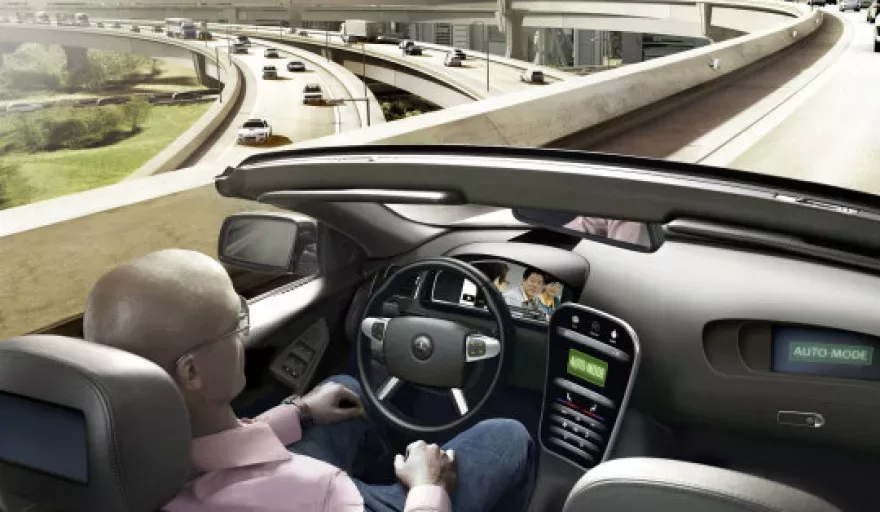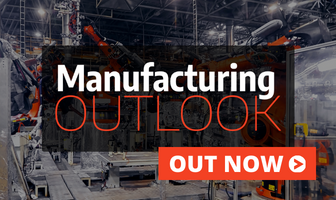Continental AG is one of the most renowned manufacturers in the global automotive industry with a worldwide presence devoted to adhering to the last industry trends and developments.
- Q&A WITH CHRISTIAN SENGER
- Firstly, due to the demographic shifts on a global scale where populations and wealth are rising dramatically in some areas but dropping in others, how does Continental AG ensure that it keeps on top of regional trends?
- Similarly, in regards to varying economies, how much of a variation is there in the types of products and services that Continental AG offers in emerging economies, as opposed to those in its native Europe, for instance?
- Is it more important to cater for these differing regional demands, or to maintain the same, consistent offering in every operating region?
- Has Continental AG earmarked further international expansion as a consequence of any particular trends, and if so, where and why?
- Climate change and environmental factors have obviously played a massive part in influencing the manufacturing industry in recent years, so how has Continental AG specifically catered for this trend and how does the company set itself apart from competitors in this regard?
- What are the key automotive trends influencing Continental AG’s growth at present, and to what extent is the Company succeeding in adapting to these trends?
- What exciting new introductions to the market is Continental AG planning for 2015 and how does the company feel this differentiates from what already exists on the market?
- What do you feel the key to success will be in the automotive sector, over the coming years?
Complementing its obligation and necessity to keep in line with sector regulations, however, exists a similarly pivotal expectation to actually veer ahead of the industry curve, and to that end, Europe Outlook spoke to the Group’s Head of Automotive Electronics and Advanced Development, Christian Senger about the tyre producer’s latest innovations, commitment to eco-progression and forecasts for the future of the sector on a global scale.
Q&A WITH CHRISTIAN SENGER
Firstly, due to the demographic shifts on a global scale where populations and wealth are rising dramatically in some areas but dropping in others, how does Continental AG ensure that it keeps on top of regional trends?
Christian Senger (CS): With more than 200,000 colleagues working all around the globe in 53 countries, we have a very good connection in our various target markets. “In the market for the market” is not only a marketing phrase.
We are developing our products in Shanghai, Singapore, Auburn Hills, Toulouse, Timişoara, Regensburg, Frankfurt, Hanover, Bangalore, and many other locations. We are also in close contact with our broad range of customers.
We are holding top-level management meetings together with our global customers to exchange technology roadmaps and align our development programmes. With local experts in the regions, there is a continuous exchange, combined with knowhow on the basis of our own market studies, such as the Continental Mobility Study.
Similarly, in regards to varying economies, how much of a variation is there in the types of products and services that Continental AG offers in emerging economies, as opposed to those in its native Europe, for instance?
CS: We see a global trend for the democratisation of technology. What does this mean? If you look at the megatrends in the automotive industry – safety, environment, and information – these trends don’t stop at national or regional borders.
Take just two examples: we see global demand based on global accident statistics. You just have to reflect on the 1.2 million people killed in traffic accidents every year worldwide. That is why we invest heavily in the availability of safety technology, in small vehicle classes, too.
We also see the global need in changing the way vehicles are propelled: worldwide, around 53,000 people die because of pollution that is caused by all kind of vehicles. With our electronic Horizon (eHorizon), the engine management of a whole commercial vehicle fleet alone has saved more than 90 million litres of diesel since 2012.
And looking especially at young drivers and their need to be online all the time: we are developing integrated smart phone solutions that will prevent the deadly “texting while driving”. And these topics are not focused solely on Europe, Japan, or North America. These are global topics.
Is it more important to cater for these differing regional demands, or to maintain the same, consistent offering in every operating region?
CS: It is important to localise technologies in the area of HMI, the human machine interface. Whenever you have a direct interaction between the driver and the vehicle, the vehicle has to adapt in a certain area to habits, especially interaction habits. And here we have the direct opposite: an emergency brake assist can be integrated into vehicles independently of their target markets.
Taking everything into account, there is the need for global technologies that can be adapted with specific variations for the different markets. This allows economy of scales by fulfilling individual consumer needs.
Has Continental AG earmarked further international expansion as a consequence of any particular trends, and if so, where and why?
CS: We are following the global growth strategy of our customers. We support them in having the same supply chain wherever they produce their products all over the world. In addition to this, we are looking intensely into growing markets. That’s why we have 20 years of successful growth in China, for example.
Climate change and environmental factors have obviously played a massive part in influencing the manufacturing industry in recent years, so how has Continental AG specifically catered for this trend and how does the company set itself apart from competitors in this regard?
Innovations are also the most important factor in the field of sustainable mobility. Our goal is to reduce energy consumption, because lower consumption means lower emissions and lower costs. This is a major challenge for our industry, since we are already working at the limits of technology.
This is why we are adopting at least a two-pronged approach to overcome this challenge: we are continuing to improve internal combustion engines and at the same time developing electric drives. Our “48-Volt Eco Drive” mild-hybrid system, which is ready for production, combines the best of both worlds: combustion and electric technology.
The “48-Volt Eco Drive” system can be installed in conventional-drive vehicles. Diesel or gasoline? The type of fuel is irrelevant. This makes our solution worthwhile for vehicles in the volume sector. Large quantities provide opportunities for improving energy efficiency.
Three features in particular are making a valuable contribution to this: coasting with the engine switched off during the journey, efficient recovery of braking energy, and restarting the engine again very quickly and conveniently. These, together with forward-looking energy management technologies, can cut fuel consumption by more than 20 percent. This helps save the environment and saves the driver money.
What are the key automotive trends influencing Continental AG’s growth at present, and to what extent is the Company succeeding in adapting to these trends?
CS: In 2012, we presented a technology roadmap for one of the most challenging but also rewarding fields for engineers all over the world: Automated Driving.
In 2016, more and more vehicles of different vehicle classes will be able to support the driver with partly automated driving functions in specific driving environments such as on highways. In 2020, the time will have come for highly automated driving on highways, and automated parking will also be available with the help of our sensors, electronic control units, and actuators.
From 2025 onwards, fully automated driving will be technically possible. The driver will have the freedom to use the time in the car for activities other than driving.
Along the way to automated driving, we will see a broad range of new technologies: stereo cameras that are already in series production will become even better. Head-up displays will turn into Augmented Reality devices, which will be able to show the driver exactly what the vehicle is detecting. Haptic feedback will be used in the interior to support the driver in interacting with the vehicle. And the brakes will become even quicker to support the onset of advanced driver assistance systems.
What exciting new introductions to the market is Continental AG planning for 2015 and how does the company feel this differentiates from what already exists on the market?
CS: One of the most important products will be the electro hydraulic brake MK C1, production of which starts in 2015. With this very compact braking module, the overall weight will be reduced. The new concept is also providing very powerful braking, resulting in reduced braking distance.
What do you feel the key to success will be in the automotive sector, over the coming years?
CS: The key for future success lies in electronics and software, which enable more and more features in mobility.
Software is the “new wheel” of the industry. Nowadays, hardly anything can turn or function without it. The modern vehicle has up to 100 on-board electronic control systems. As the vehicle’s brain, they make pre-programmed decisions. In the future, sensors and electronic systems will work together in a network, thereby significantly increasing vehicle performance. Vehicles will then be able to communicate with one another as described via networks.
Even more and better software will make this possible. Smartphones, the internet and social media have brought about a completely new dynamic; one that is radical, powerful, and demanding. The logic of the digitally connected world is having a major impact on the car and thus on mobility as a whole.
Above all, we see the opportunities that this change represents. In our eyes, the contributions of the IT and Internet industry are challenging and enriching alike. We are therefore open to any collaboration that creates value.
Our expertise in intelligent mobility is recognised all around the world. This expertise is essential because it turns prototypes and concepts into reliable, safe production vehicles.
Worldwide, we currently have around 11,000 engineers, programmers, and experts working in the field of software. They are necessary, because future challenges will only be overcome with excellent software solutions.



































